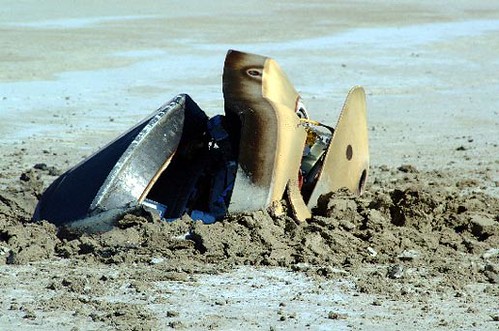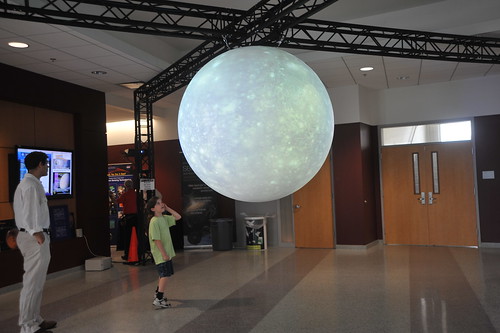Awesomeness Round-Up – 6/27/11
- By Faith Tucker
- June 27, 2011
- Comments Off on Awesomeness Round-Up – 6/27/11
Although it may be less well known than her nefarious box, Pandora’s Cluster has made a splash of its own as a team of scientists unraveled this galaxy cluster’s tangled history.
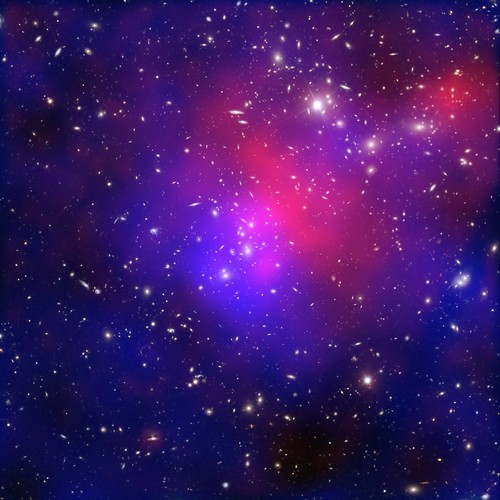
Credit: X-ray: NASA/CXC/ITA/INAF/J. Merten et al. Lensing: NASA/STScI;
NAOJ/Subaru; ESO/VLT Optical: NASA/STScI/R. Dupke
It appears that this giant cluster of galaxies is the result of at least four individual galaxy clusters colliding simultaneously over a remarkably brief 350 million years. The false coloring of this image shows the cluster’s constituent galaxies (shown in white and accounting for 5% of the cluster’s mass), extremely hot gas emitting X-rays (shown in red and accounting for 20% of the cluster’s mass), and invisible dark matter (shown in blue and accounting for 75% of the cluster’s mass).
Picture this: you’ve spent years designing and building a state of the art satellite that soared one million miles away from the Earth and collected material from the solar wind for nearly three years. Your mission is poised to be a great success as you await its gentle landing and access to the precious samples it contains. But at the last moment you watch as the parachute fails to deploy and the whole satellite crashes into the Utah desert.
Stories like this may make scientist and engineers everywhere shudder and cringe, but the Genesis teamed proved that not even a crash landing rules out the possibility for a happy ending. The team spent nearly seven years meticulously picking through the debris and laboriously decontaminating their samples, and now they have something to show for it. According to Kevin McKeegan, a cosmochemist from UCLA and leader of the team that analyzed the Genesis samples, “We found that Earth, the moon, as well as Martian and other meteorites… have a lower concentration of the O-16 than does the sun. The implication is that we did not form out of the same solar nebula materials that created the sun – just how and why remains to be discovered.”

STS-1 launches April 12, 1981, Credit: NASA
The countdown has begun for the shuttle Atlantis, which will launch from Cape Canaveral on July 8th (pending any delays). This launch will bring to a close an era that started three decades ago as NASA retires the last of the shuttle fleet. This ScienceNews piece outlines the milestones of the space shuttles successful, though occasionally tragic, career. And remember, if you’re anything like me and seeing a shuttle launch has been on your bucket list since you were seven years old, then this July is your last chance!
It is treacherous to send a spacecraft hurtling towards Mercury because the enormous mass of the nearby Sun threatens to snatch it away from its target. Amidst great risk, the MESSENGER spacecraft successfully navigated its inner solar system voyage and became the first spacecraft to fall into orbit around the sprightly innermost planet this March. On June 21st, NASA released this lovely color image of Mercury’s terminator – the line dividing the day and night hemispheres of the planet. Due to the conditions of Mercury’s orbit, the planet is locked in what is called a spin orbit resonance in which the planet spins on its rotational axis three times for every two orbits it makes around the Sun. This means that each Mercury year is made up of only one and a half days! Such an extended day/night cycle makes the terminator a particularly interesting region to study. You’ll also notice that Mercury’s surface is freckled with impact craters much as our own Moon is due to its lack of a protective atmosphere.

Credit: NASA/Johns Hopkins University Applied Physics Laboratory/Carnegie Institution of Washington
A group from Leiden University in the Netherlands recently discovered a young protostar ejecting vast amounts of water from its polar regions at speeds 80 times faster than a bullet leaving a machine gun. It is not uncommon to see stars and other objects with jets of energetic radiation, but stellar fire hoses of water like this have never been observed before. Data from the European Space Agency’s Herschel Space Observatory implies that hydrogen and oxygen atoms are swirling on and around the star and condensing into water in the star’s relatively low surface temperatures. However, if these water droplets come in contact with a jet they get spewed out from the star as a gas, after which they create a shock front where they rapidly return to their liquid state. According to the research team, this phenomenon appears to be a brief phase that all protostars must pass through on their way to full stardom – think of it as the stellar equivalent of a grumpy toddler squeezing their juice box with all their might.
Last Wednesday was Celebrate Goddard, a center-wide event in which we, you guessed it, celebrated Goddard and all of the exciting and important work that is done here. The fun-filled day involved exhibits from many of projects taking place on center, presentations of research, a parade, car show, and even a talent show!
There were telescopes (with solar filters!) to check out the Sun:
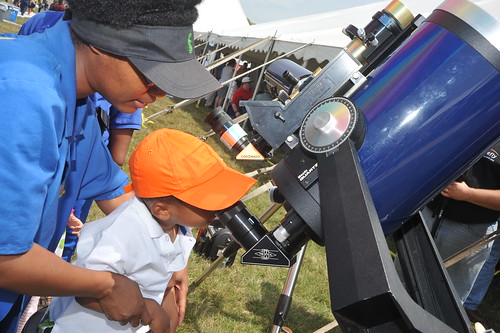
Credit: NASA/GSFC/Debbie Mccallum
Scientists talking about what they love:

Credit: NASA/GSFC/Debbie Mccallum
Fun educational activities:
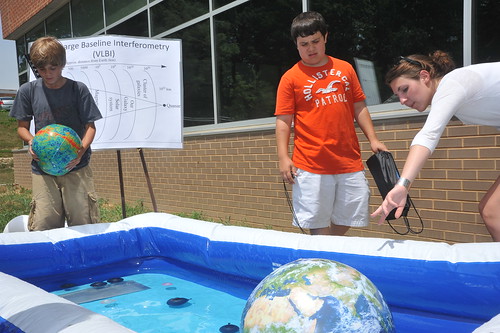
Credit: NASA/GSFC/Debbie Mccallum
And did we mention the food??
In addition, a brand new portable Science on a Sphere (we’ve already got a permanent one in the Goddard Visitor Center) was installed… just a few dozen feet from Sara’s office!


